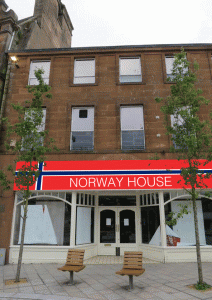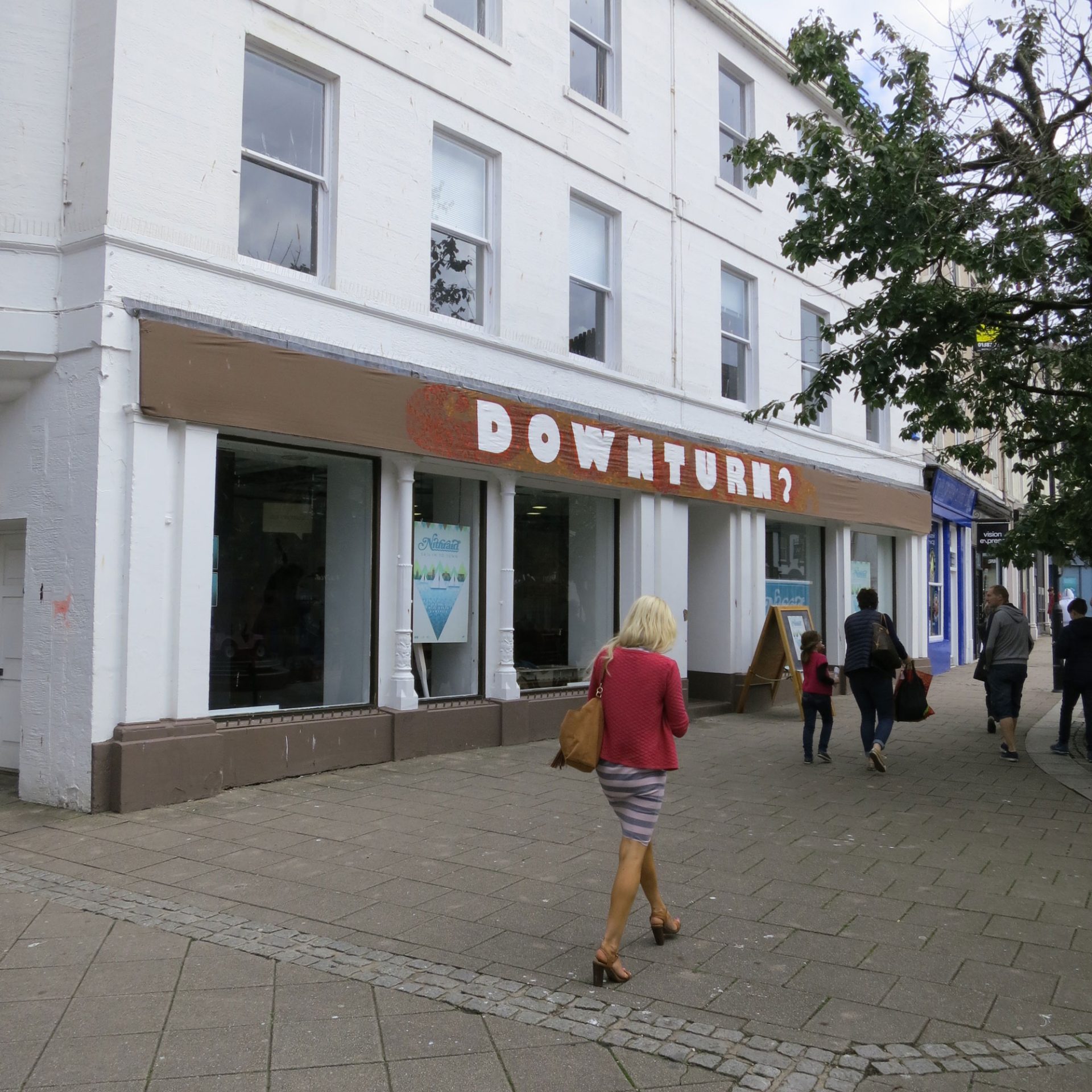You are invited to share your ideas and contribute to our Cultural Wayfinding event, taking place from 5th to 7th November with Lateral North and The Stove Network.
Town centres are a hot topic throughout Scotland at the moment, with a focus on how they might once again become vibrant and populated spaces. Initiatives have been established by the Scottish government and partner organisations such as Scotland Can Do Towns and the Scottish Towns Partnership, who are leading the way by working with communities across the country. Discussions, conferences, innovative ideas, and project proposals are increasing as we strive to reconnect communities with their local shops and town centres.
Dumfries is one such place taking an exceptionally innovative approach, where art and design take centre stage to provide creative solutions for the town centre. The arts resource, The Stove Network, has been leading various projects aimed at regenerating the town centre. They have transformed a building previously out of use into a hub of creative thinking and forward-thinking design.
The Stove Network has teamed up with Lateral North, an architecture, research, and design collective based in Glasgow with strong ties to Dumfries, to collaborate on an exciting and dynamic project. This initiative reflects on the culture, heritage, and built environment of Dumfries town centre, focusing on elements that have been overlooked or not adequately highlighted.
Their Cultural Wayfinding project aims to create a range of opportunities that will not only boost tourism but also serve as an economic catalyst for new jobs and initiatives for local people. These efforts are centred around art and design, demonstrating how they can illuminate the rich culture of this historic town.
The first of these initiatives focuses on Dumfries’ connection with Norway, particularly the buildings hidden within the town centre that once hosted the Norwegian army in exile during World War II. These buildings provided the army with spaces for meetings and accommodation throughout the war.

Lateral North and The Stove Network will host a three-day workshop from 5th to 7th November, inviting the public to contribute ideas for a public art installation. This project will highlight Norway House at 8 Church Street, the building used as Headquarters and Cultural Centre by Norwegians in exile during 1940. Currently empty, the building remains unused due to extortionate retail rates, which are likely to persist for the foreseeable future. However, this initiative aims to emphasise the creative possibilities for such spaces, encouraging communities to attract tourists, revitalise town centres, and generate economic activity through existing built environments.
Graham Hogg of Lateral North, who grew up in Dumfries, said: “I’ve watched Dumfries town centre slowly lose more and more of its local shops, with vacant shops becoming increasingly common. This has had a detrimental effect on the town as a whole, and I believe it is fantastic that The Stove is leading this exciting project. To be part of it is a real honour, and hopefully, through the Norway House project, we can create an exciting and innovative model that can be applied to Dumfries town centre in the future and adopted throughout the rest of Scotland.”
NB: There are paid opportunities for Stove Network members to assist with the project on 5th, 6th, and 7th November.







